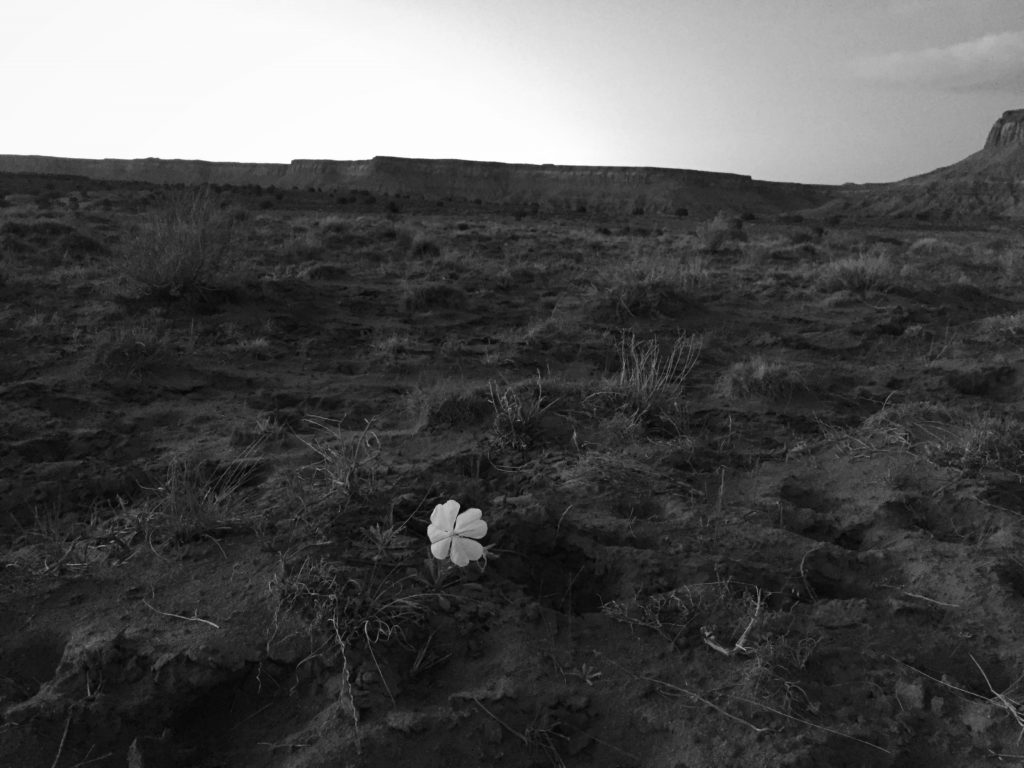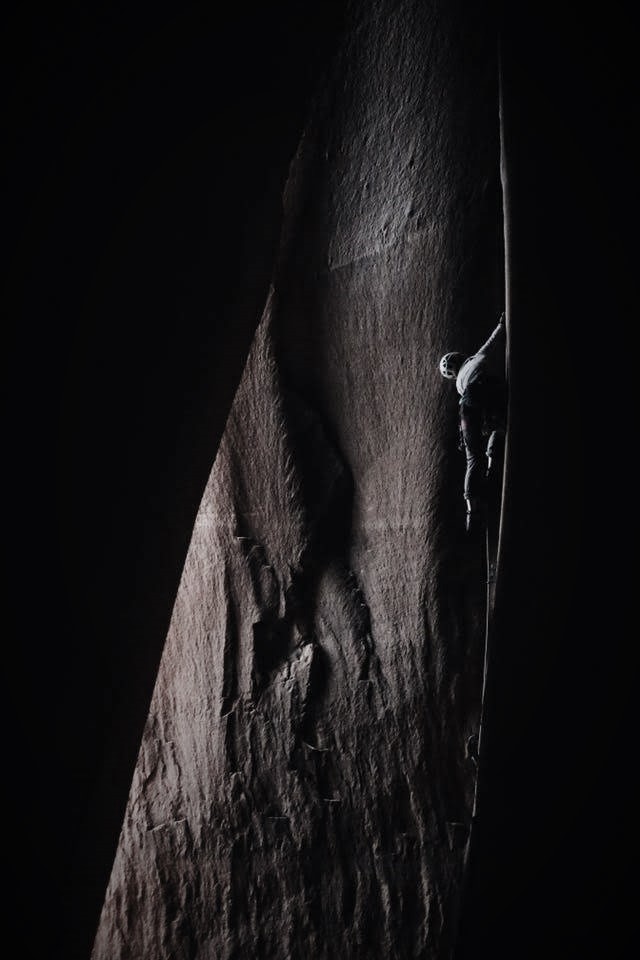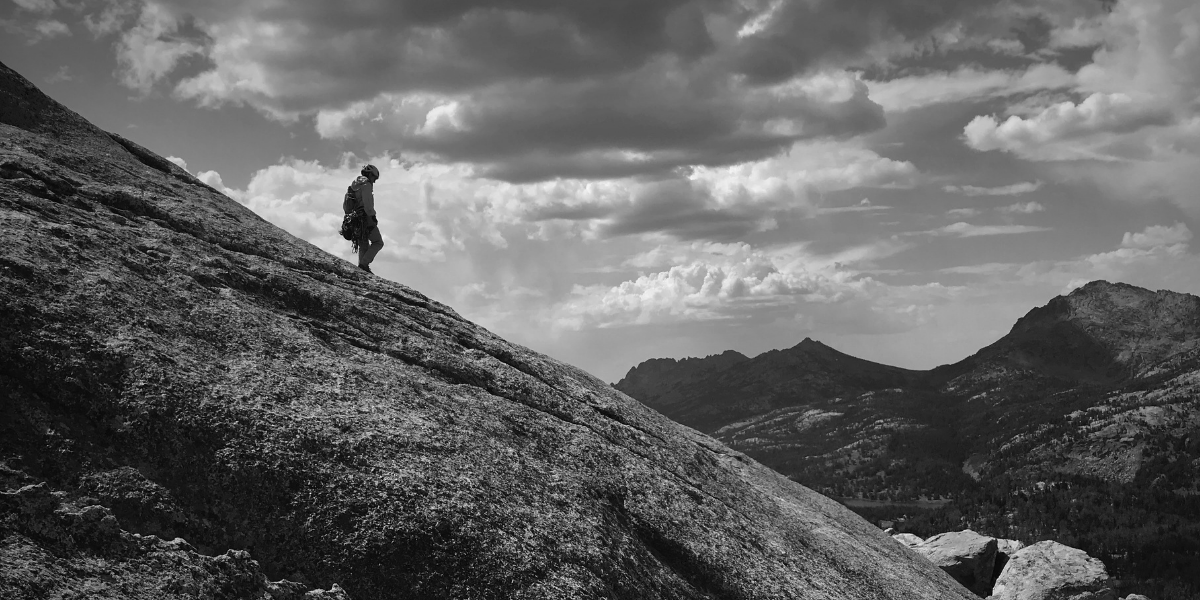Take a minute to close your eyes and imagine a heavy loneliness, darkness, and loss closing in on you. You were never taught how to feel this. Normally you can bury it, or escape it, but this one paralyzes you. Your heart descends into its emptiness. It is a feeling like “pushing through stone”. It is a deep feeling of grief.
This darkness grows unnoticed in our climbing community. It is hard to talk about, hard to process, hard to support. We participate in a sport where a high level of stoke walks hand in hand with risk; where high physical demands can meet high emotional stress; where we are at the mercy of the natural uncertainty of the wilderness. Loss, trauma, aging, and stress can debilitate climbers for a while, or forever.
Filling a Need
Once upon a time, we turned to our elders for wisdom and guidance. Some of us are lucky enough to have an older, wise mentor, but many of us are defenseless in these moments. How can we make sure everyone has access to the tools to help them navigate these moments? How can we offer support to climbers, skiers, and alpinists facing their lowest lows? Can we create space for vulnerability? Can we teach people how to support each other, so that we no longer have to avoid the topic, nor pry it open? In the spring of 2018, professional climber and guide, Madaleine Sorkin, formulated the idea for the Climbing Grief Fund (CGF). A fund created to work on exposing and treating the grief in our community.
When I first heard of the Climbing Grief Fund, I wasn’t sure what my initial thoughts were. People who choose to participate in the sport of climbing at extreme levels are choosing to live closer to death and trauma. Does this warrant financial support? Where would the money go? Why can’t they find mental health support independently? My skepticism led me to watch “A Thousand Ways to Kiss the Ground”, a film produced by Henna Taylor as a fundraiser and to raise awareness for the CGF. The film transformed my skepticism into curiosity. Upon exploring CGF’s website, I learned the many ways CGF has been working to help climbers cope with grief. CGF connects climbers with appropriate therapists, shares personal stories of loss, and provides education on grief and mental health. The influence of CGF is far broader and deeper than I expected.

Choosing Risk
To understand why CGF is important, I think we need to understand why risk is important. Take a minute to rewind to your childhood. If you were lucky, you had a warm support network of adults. They created a safe microcosm in which you could learn and grow. You weren’t ready to make your own judgment calls or risk assessments. Instead, you learned rules: “don’t run by the pool; don’t cross the street without an adult; don’t talk to strangers; don’t swim too far out, etc.” These were all meant to ensure your survival. Eventually, there came a point where your survival was put into your own hands. You were given the choice of how closely you want to walk the line between life and death.
Some of us find this line in the freedom of the mountains. As Madaleine explains, “it is a beautiful thing that climbing offers us—to be present with the complexity of choosing to risk and being in honest relationship with our fragility and mortality.” It is an experience that can make life and our earthly relationships sweeter, deeper, and more meaningful.
By contrast, working in healthcare, I find myself surrounded by sadness, illness, and death. Watching patients tolerate a poor quality of life with little freedom and limited opportunities is painful. To me, that is not what the human experience is about. The American Alpine Club explains their support of the grief fund stating “we know that climbing is an inherently dangerous undertaking. We feel the risk is outweighed by the strong expression of selfhood that comes from moving up rock, snow, and ice, but danger and risk can lead to injury and loss.”
We may not all want to stretch ourselves to the extremes of our abilities, but it is vital to have people in this world who redefine human capability. They expand our world and help us grow past the rules we grew up with. They give us inspiration that we, too, can grab control over our lives and take ourselves to greater heights. Their contagious confidence and energy can lead to death, but it also leads to a sweeter life.
The Formation of CGF
 In the fall of 2017, Madaleine attended the funeral of the young professional climber, Hayden Kennedy. Hayden’s parents, Michael and Julie, were heartbroken, grappling with the sudden loss of their son. Hayden’s mom, Julie, articulated the need for support from the community. This led Madaleine to wonder what that support would look like. Knowing how to offer support is hard. It is hard to listen to someone’s grief when there is nothing we can do to fix it. She wanted the climbing community to make space for the pain of grief and to be educated on how to offer this support.
In the fall of 2017, Madaleine attended the funeral of the young professional climber, Hayden Kennedy. Hayden’s parents, Michael and Julie, were heartbroken, grappling with the sudden loss of their son. Hayden’s mom, Julie, articulated the need for support from the community. This led Madaleine to wonder what that support would look like. Knowing how to offer support is hard. It is hard to listen to someone’s grief when there is nothing we can do to fix it. She wanted the climbing community to make space for the pain of grief and to be educated on how to offer this support.
Hayden’s death was one of many experiences of loss Madaleine had experienced over the past year. The CGF was beginning to come into fruition. In October of 2019, to build awareness for the fund, Madaleine enlisted the help of Mary Harlan, a well-respected climber, single mother and firefighter. Together they attempted 24 hours of climbing in the Black Canyon of the Gunnison, a 2000 foot deep canyon full of committing climbs.
Anyone who has climbed long and committing routes knows the feeling of vulnerability with being small and alone, high up on a rock face. The climb softened the barriers Madaleine had built up around her own grief. It was her “grief cry”: a physical challenge in an unforgiving environment. It was an opportunity to show the community she was willing to be vulnerable. After the climb, the two shared their experiences among friends. They spoke about grief and gave gratitude to each other for a community “strong enough to include their pain.”
Since the beginnings of CGF as a partnership with the American Alpine Club (AAC), it has continued to gather more attention, grow, and offer more comprehensive support to the community. In the fall of 2019, it’s programming really expanded with the formation of the story archive project and the launch of grief workshops and psychoeducation. In July of 2020, the film, “A Thousand Ways to Kiss the Ground,” was available for two weeks as a fundraiser and to draw attention to the mission of the fund. CGF now holds status as a program within the AAC.
Story Archives
While the film “A Thousand Ways to Kiss the Ground,” was only available for two weeks, the individual interviews are all available to watch on CGF’s website as a part of the story archive project.
For example, professional climber Matt Segel explains how climbing can be an addiction and discusses his experience with substance abuse. Renowned mountaineer Kitty Calhoun offers the idea of creating space for silence and listening in an otherwise fast-paced, “ADD” world. Climber and alpinist, Brette Harrington described her choice to leave the search party for her brother, Marc when the hope of his survival became futile. Instead, she knew he would have wanted her to take advantage of the bluebird day. The mountains were calling to be climbed in his honor.
These are just a few of the many stories available on CGF’s site. These stories reminded me of a deeper connection that I have with stark stone faces. It is one that transcends the thrills of goals, grades, and goofing off, that taps deeper into the human experience.
Something for Everyone
Today, the CGF has a well-maintained website embedded within the AAC. It offers links to a therapist directory, reading suggestions, and writing therapy programs. There are monthly CGF talks with professionals in the mental health field, and psychology education materials. The site is geared towards everyone: people who need help, people who want to support friends in need, or people who just want a deeper understanding of grief. There is also an opportunity to add therapists to the directory and materials to the website. Additions by the community are encouraged.
No matter your level of risk tolerance, whether you are a weekend warrior with a nine to five job, or a dirtbag reading this on a smartphone over some mac and cheese, I believe at some root our draw towards the rock is akin. I would recommend you pay a visit to CGF’s website. If it speaks to you, please donate to the fund. I guarantee that all donations are appreciated and put to good use. Finally, I would like to end with a quote that was highlighted at the end of “A Thousand Ways to Kiss the Ground,” from the poem “Pushing Through” by Maria Rilke:
You be the master: make yourself fierce, break in: then your great transformation will happen to me, and my great grief cry will happen to you.
Want more climbing content? Get our awesome climbing newsletter, delivered weekly.
Explore More
Related articles you'll love- Moja Gear’s Rock Climbing Gear Guides
- Presence: a Lesson on Overcoming Depression
- Rock Climbing Training – The Principles of Programming
- Moja Gear’s Home Training Gear Buyer’s Guide
- How to Build Your First Trad Rack
- Best Shoes for Bouldering, Sport, and Trad Climbing








